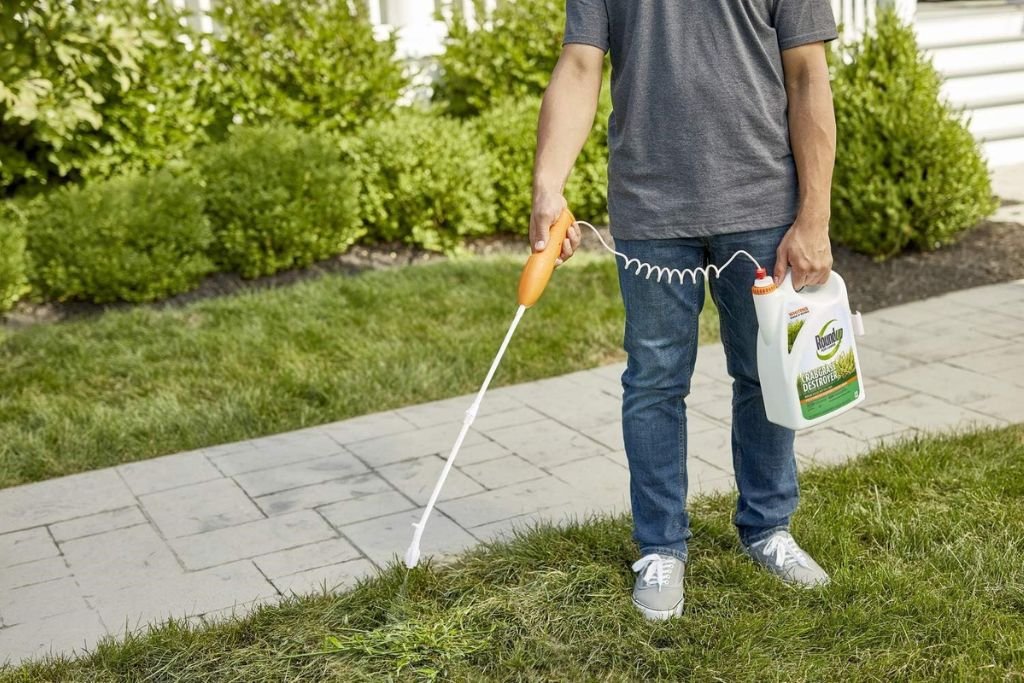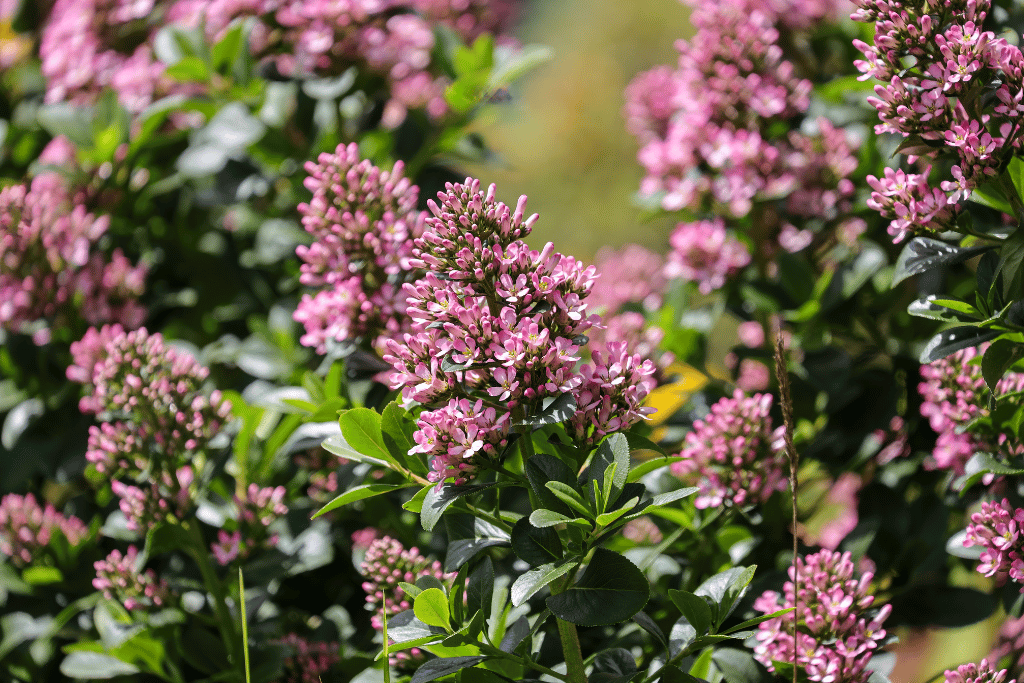
Escallonia is a genus of evergreen flowering shrub that consists of a dozen or so species. They grow quickly, producing dense foliage and loads of bright flowers.
Native to North and South America, escallonia can be confidently cultivated in USDA hardiness zones 8-10. In these locations, the shrub can will withstand low temperatures down to 10 degrees, but no colder.
Escallonia grows quickly, adding up to 1 foot of new growth per year and reaching 5-10 feet in maximum height.
The Pink Princess of Escallonia
The species ‘Fradesii” or Pink Princess, as it’s affectionately known, will grow to 6 feet in height and spread 5-6 feet wide. It is a desirable hybrid variety for a number of reasons.
- Vibrant pink flower clusters will bloom the majority of the year, especially in tropical climates.
- Glossy, slightly serrated leaves remain an impressive, dark green color throughout winter.
- Pink Princess responds well to trimming, pruning, shearing and shaping.
- It is a versatile and aesthetically pleasing shrub that works well in most warm-weather landscapes.
- Use it as a privacy screen, shade plant, accent, hedge, border and backdrop.
- Pink Princess tolerates salt conditions well and will thrive in coastal regions.
- The long-lasting bright pink blossoms give way to tiny fruits that help feed the local bird population.
- Important pollinators like bees, butterflies and hummingbirds are attracted to the bright pink flowers of escallonia fradesii.
- Escallonia Pink Princess can live up to 40 years or more under the right conditions.
Now that we know all of the wonderful features of this evergreen flowering shrub, let’s discuss how to best maintain and care for it.
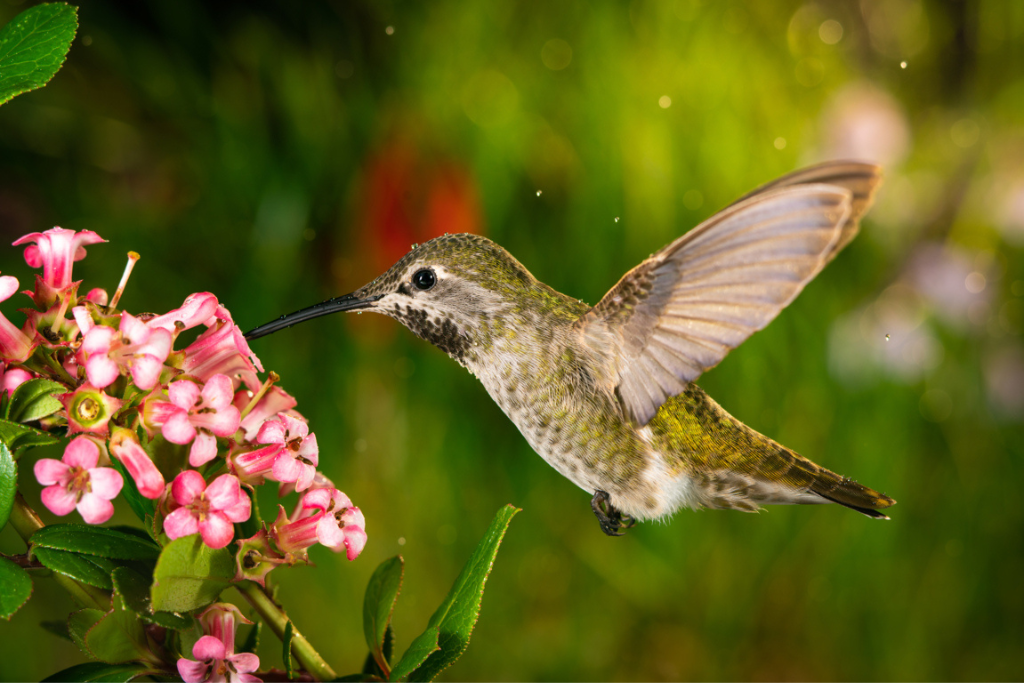
How to Care for Escallonia Fradesii
Escallonia shrubs are generally low-maintenance plants. Follow the instructions below to plant, establish and set up a care routine for your escallonia shrubs.
Planting Instructions
Your Pink Princess escallonia shrubs should be planted in the spring or early fall. This will prevent transplant shock that can occur during the long, hot summer days.
The planting location should allow space for the roots to grow unimpeded. To accommodate enough space for the roots, dig a hole as deep as the root ball and three times as wide. Mix a generous amount of compost into the original dirt so you can backfill with rich, well-drained soil.
Although escallonia adds a nice touch planted alongside walls or fences, be sure to give them enough space in between any structure. Imagine the full-grown size and shape and plant far enough away so the mature foliage and flowers won’t crowd any structure or living space. Take into consideration how the full-size shrub will fit into the landscape.
To free the plant from its container, support the base of the plant and tip it on its side. Gently push and roll the side of the container to loosen up the soil and roots within. Work your way all around the container until the plant slides out. Gently pull from the base. If the plant is stuck in there too tight, use scissors or shears to carefully cut it down the side of the pot and peel it off.
The plant can now be placed into its hole. If roots are tightly wound, use your fingers to gently break them up. Circling roots won’t spread and therefore can’t absorb water and nutrients properly. Cut them in a few spots, break up the soil and splay the roots out before planting.
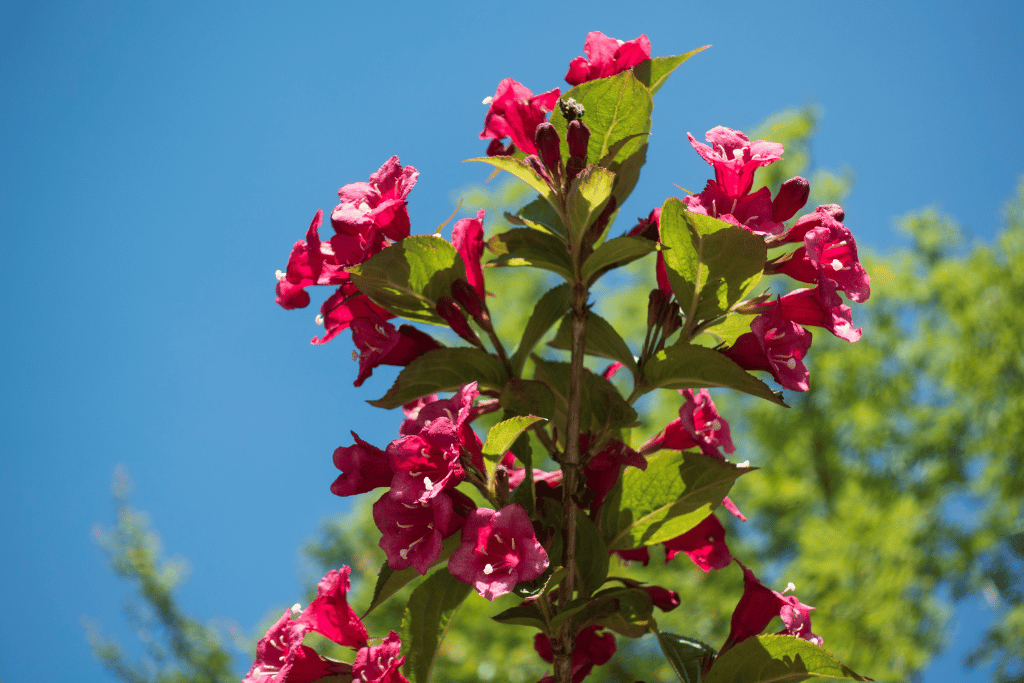
Set the plant so it’s firm and level then carefully backfill the hole with the dirt/compost mix. Bring the soil level just to the base of the plant where the roots start to flare out from the trunk. If the shrub is planted too deeply it could lead to smothered roots and rotting along the main stalk.
Water the plant heavily, ensuring the roots are thoroughly moistened. Fill in with soil any spots around the plant that have eroded. Add a layer of mulch about 2 inches thick. Spread it all around the planting hole, keeping it a few inches away from the trunk. You don’t want moisture to collect and linger there; it could lead to fungal disease, decay and death.
Watering
Young plants need to be carefully tended to. During the first growing season sufficient watering will be crucial.
One deep, heavy watering per week should meet the needs of your Pink Princess shrub, especially if it receives occasional rain. During spells of drought, soak the around the base of the plant to 8 inches deep every few days. These deep waterings will encourage roots to grow down and out in search of more moisture, leading to a healthier, more drought-tolerant plant.
Check the soil with a moisture meter if you suspect it is starting to dry out. If the soil is dry 4 inches deep, you should definitely water your shrub. Keep a close eye on moisture levels the first two years after planting. After that, escallonia becomes quite hardy and tolerant of dry conditions. Watering will only be required during times of extreme drought for established plants.
Fertilizing
After a couple of years when the shrubs are established, they will likely need some fertilizer to sustain larger growth and flowering. Fertilize early in the spring when your shrub begins to shoot out new growth.
Find a fertilizer specifically designed for shrubs and trees, preferably organic, and apply it according to the instructions on the package. Remember not to overfeed, as this can lead to burnt foliage and stunted growth. The best approach is to start lightly with half the recommended dose and observe how your shrubs respond. From there you can arrange an appropriate feeding schedule.
Pruning
Most varieties of escallonia can be rejuvenated and refreshed with proper pruning or shearing, and Pink Princess is no exception.
Prune your shrubs annually to remove dead branches, encourage flowering, promote bushier growth and maintain your desired height, shape and size.
Broken or dead limbs can be cut back to their source at the trunk. To prune for shape and size, always cut the branch at a slight angle just above a bud or node. New growth will then spring forth from this point. Always use sharp, sanitized clippers.
Hedge trimmers can be used to evenly shape the shrubs, keeping them looking formal and uniform. Selectively prune early in the spring before budding or shear late in the fall after flowers have come and gone to ensure you get to enjoy the rosy pink blossoms.
Where to Plant Escallonia Fradesii
Given its preference for warm weather, it won’t be worth your time and effort to plant Pink Princess shrubs in regions that experience harsh winters.
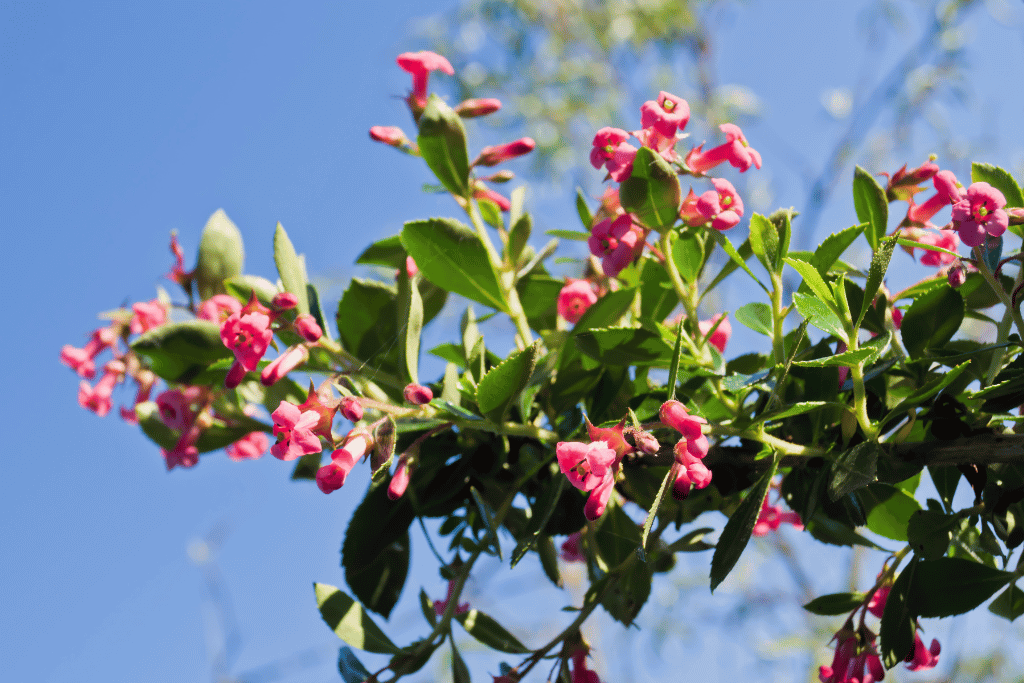
Geographic Location
That said, escallonia fradesii will thrive in the coastal regions of Virginia and the Carolinas. The low-lying areas of the southern states will make a perfect home for the shrub. Pink Princess will happily reside in the desert climates of the southwest and all along the Pacific west coast.
Sun Exposure
Escallonia shrubs will grow best in full sun sites, requiring lots of energy to put out plentiful long-lasting flowers and fruit every season. Although, in especially dry, sunny areas the evergreen shrub should be relieved with a bit of afternoon shade.
Soil Type
Pink Princess isn’t too fussy about soil as long as it’s well-drained, rich in organic material and on the slightly acidic side. The shrubs can be mulched to help keep roots cool and maintain even moisture in the soil. Spring and fall are good times to refresh the plant with compost.
Other Planting Considerations
If your region typically gets cold weather in the wintertime, consider planting escallonia shrubs in an area where they’ll be protected from strong wind gusts. Pink Princess can also be covered if freezing temperatures threaten. Planning ahead of time will save your shrubs from cold weather damage.
If you are attempting to make a hedge or border with escallonia, plant bushes closer together than you would individual plants. They grow quickly and will fill in within a few years making a gorgeous flowering privacy hedge. Keep them properly pruned and trimmed to ensure air circulation and good health.
Avoid Disease in Escallonia Fradesii
A common fungal disease in escallonia shrubs is leaf spot. It will show up as dark spots on leaves, turning them yellow and causing damaged foliage to drop. If left untreated, the shrub can lose all of its leaves.
To prevent leaf spots from infecting your Pink Princess, make sure it’s planted in well-drained soil. Standing in damp soil is an open invitation for all types of fungi to thrive.
Don’t let your shrubs become overcrowded. Take the time to prune out any dead, broken or sickly-looking branches every year. Plenty of sunshine and air circulation throughout the interior of the plant is critical for preventing diseases and pests.
During winter months make sure your escallonia plants are given shelter and cover them if freezing temperatures are expected.
If your shrubs do become infected with a fungal disease, it’s best to remove all the infected leaves, rake them away from the plant and destroy them to prevent the spread. Treat the plant with an antifungal. A solution of hydrogen peroxide, baking soda and water is a surprisingly effective organic fungus treatment.
Escallonia ‘Fradesii’ Pink Princess for the Win
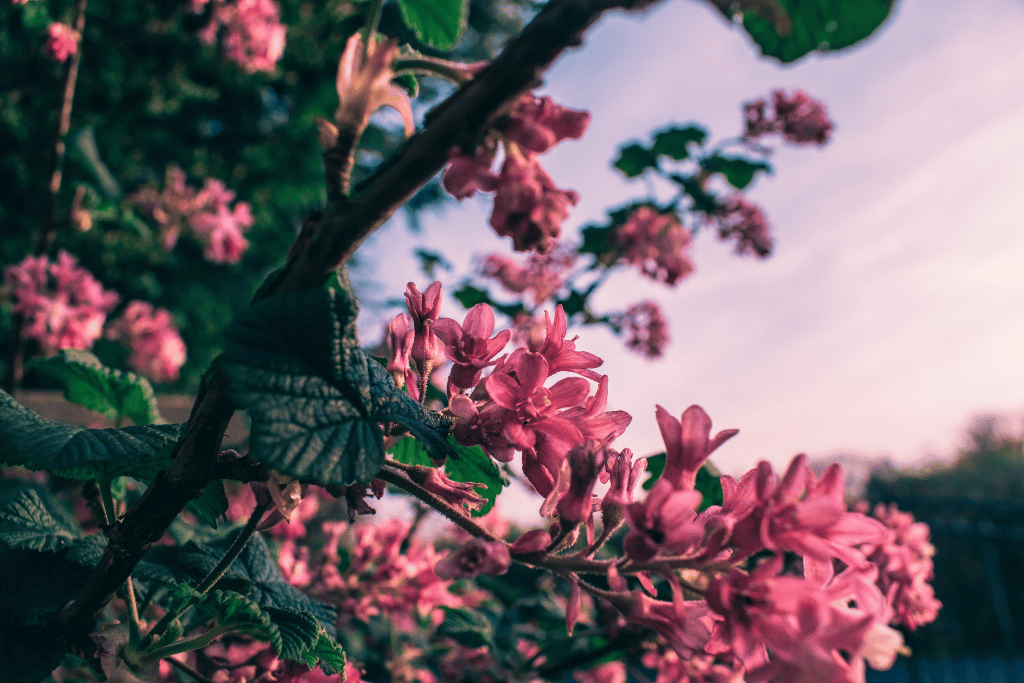
For all the beauty and utility they provide, Pink Princess shrubs are quite resilient and low-maintenance when planted in the right location.
Whether you want a stunning border along a fenceline, a privacy hedge to separate properties or just a beautiful stand-alone flowering shrub, Escallonia ‘Fradesii’ is a royal selection.
If you’re a fan of low-maintenance multi-purpose landscaping plants with vivid pink flowers, you should read all about pink muhly grass.
Frequently Asked Questions (FAQ)
Is escallonia Pink Princess deer resistant?
Pink Princess bushes are deer resistant and can be planted in woody regions without trepidation. The pretty pink flowers not only deter deer but will attract beneficial pollinators.
Are escallonia shrubs invasive?
Most escallonia varieties are not considered invasive or toxic. The biggest concern for the evergreen shrub plant is the occasional disease infection or invasion of pests.
Can escallonia be deadheaded?
During the flowering season, deadhead any spent blooms or branches that ruin the shape of the shrub. It’s not necessary and can be tedious, but a light trimming or deadheading can extend the flowering window of your shrubs.
What is the best fertilizer for escallonia?
An all-purpose or tree and shrub fertilizer is appropriate for escallonia plants. A 10-10-10 ratio will give them the nutrients they need to grow vegetatively, develop strong roots and produce lush flowers every year. Fertilize early in the spring before new growth appears.
When is the best time of year to prune escallonia?
Annual pruning or shearing should be done in the fall after the flowering phase. This will prepare the plant for winter and won’t compromise the blooming display of the following season.


